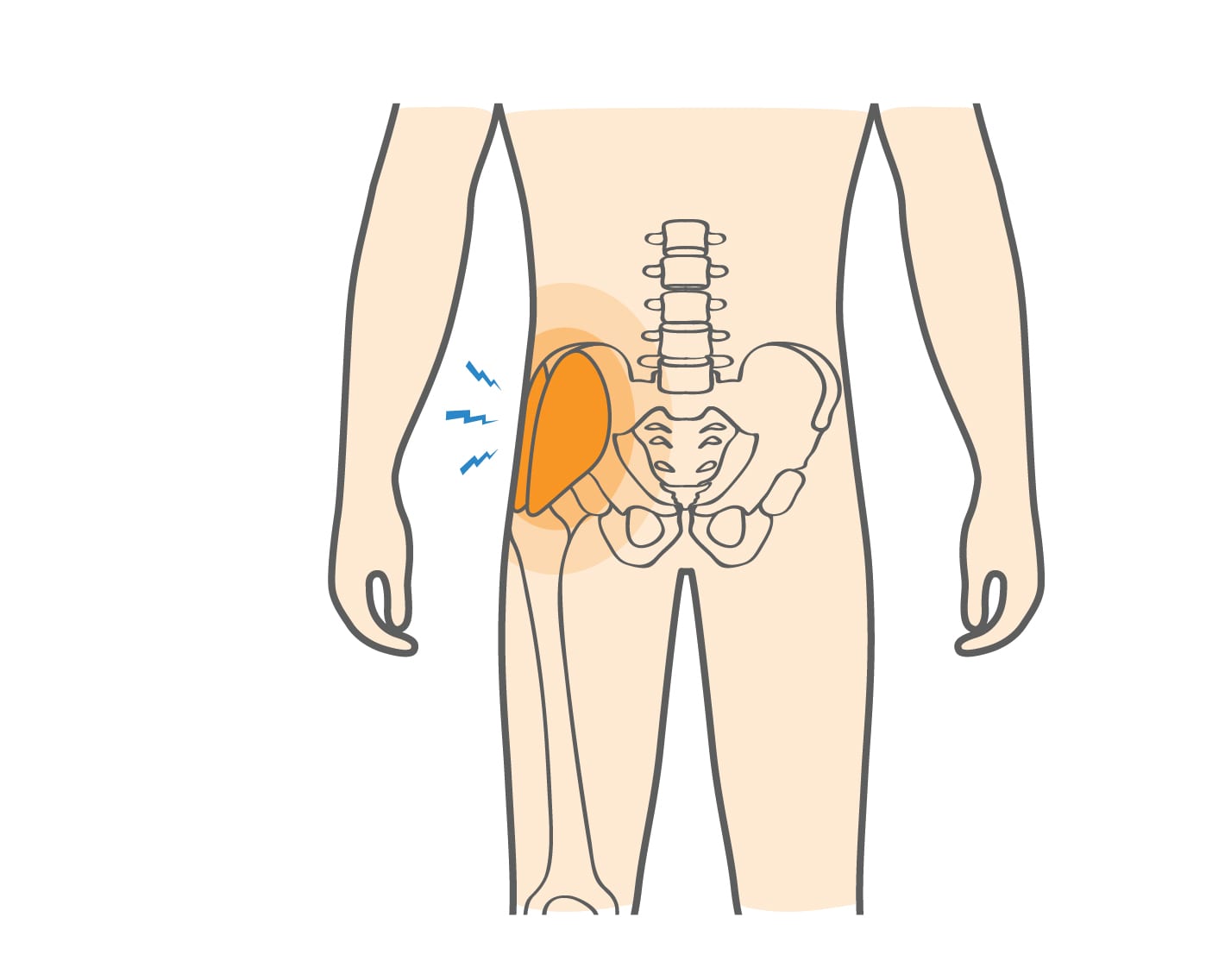The buttocks comprise three gluteal muscles: the gluteus maximus, the gluteus medius, and the gluteus minimus. The gluteal tendons are strong, fibrous tissues that connect the gluteal muscles to the hip bones. These tendons can become inflamed, resulting in gluteal tendonitis or gluteal tendinopathy. Tiny tears in the tendons can also develop due to chronic wear and tear over time. This condition can cause significant lateral hip pain and limit physical activity.
Gluteal Tendonitis Causes, Symptoms & Treatment Options
The buttocks comprise three gluteal muscles: the gluteus maximus, the gluteus medius, and the gluteus minimus. The gluteal tendons are strong, fibrous tissues that connect the gluteal muscles to the hip bones. These tendons can become inflamed, resulting in gluteal tendonitis or gluteal tendinopathy. Tiny tears in the tendons can also develop due to chronic wear and tear over time. This condition can cause significant hip tendon pain and limit physical activity.
Overview
Overview

What causes Gluteal Tendonitis?
Gluteal tendonitis is usually caused by overuse of the gluteal muscles, putting athletes at greater risk for this injury. Another contributing factor is muscle fatigue, which can create an imbalance among the gluteal muscles that support the hip. This imbalance can lead to glute muscle inflammation, further exacerbating symptoms.
Gluteal tendonitis is most common in these sports:
- Soccer
- Tennis
- Cycling
- Running
Symptoms
In some individuals, the condition may be more specifically identified as gluteus medius tendonitis, particularly when pain is localized to the outer part of the hip.
- Pain that gets worse with activity, especially running or jumping
- Stiffness, especially at night and first thing in the morning
When to see a doctor
Most cases of gluteal tendonitis will resolve with home care. But if your pain persists and you have other symptoms, such as radiating pain and numbness, you should make an appointment to see your doctor. At your visit, your doctor may ask about your injury, the sports you play, and if you have had previous injuries to your hip. This information will help your doctor make a diagnosis.
Your doctor will conduct a physical examination, looking for signs of loss of range of motion, muscle tightness or weakness, and tenderness. Diagnostic tests, such as an ultrasound scan or MRI, may be ordered to help evaluate the extent of your hip tendon pain and rule out other conditions.
Non-operative treatment
It’s important to give your gluteal tendons time to recover by avoiding sports that make the pain worse. Additional conservative treatments may include:
- Applying ice or cold packs to reduce swelling and pain
- Taking anti-inflammatory medication (e.g. aspirin, ibuprofen, or naproxen) for pain
- Stretching and strengthening exercises
- Consulting with a physical therapist
Try these exercises to help address your condition:
Below is a PDF of the Exercise Program
Recovery
Athletes can expect to return to sport quickly, but starting with a lower intensity than prior to the injury. Follow your doctor or physical therapist’s guidance on how to slowly ramp back up to your previous level, and stop if activity causes pain. Stretching and strengthening exercises will help improve your range of motion and strength, as well as help to prevent re-injury.
GET BACK TO WHAT YOU LOVE. FASTER
Sources
https://physioworks.com.au/injuries-conditions-1/gluteal-tendinopathy
https://www.webmd.com/fitness-exercise/arthritis-tendinitis#1
https://www.jospt.org/doi/full/10.2519/jospt.2015.5829
https://my.clevelandclinic.org/health/diseases/22960-gluteal-tendinopathy
https://www.sportsmd.com/performance/muscle-imbalance-common-overuse-injuries/
https://www.epainassist.com/sports-injuries/hip-injuries/hip-tendonitis
Frequently Asked Questions
Does walking help gluteal tendinopathy?
Yes, but only when done correctly. Walking can help recondition gluteal tendons, but you should start only when it’s pain-free. Use supportive footwear—avoid flip-flops or unsupportive shoes.
What causes gluteal tendinopathy?
It can result from overuse (e.g., repetitive physical activity) and underuse (e.g., prolonged sitting).
What are the symptoms of gluteal tendinopathy?
Common symptoms include pain on the outside of the hip, especially when lying on that side, climbing stairs, or after prolonged sitting or standing.
What is the best treatment for gluteal tendinopathy?
Treatment often includes physical therapy to strengthen the hip muscles, activity modification, anti-inflammatory medications, and in some cases, corticosteroid injections.

